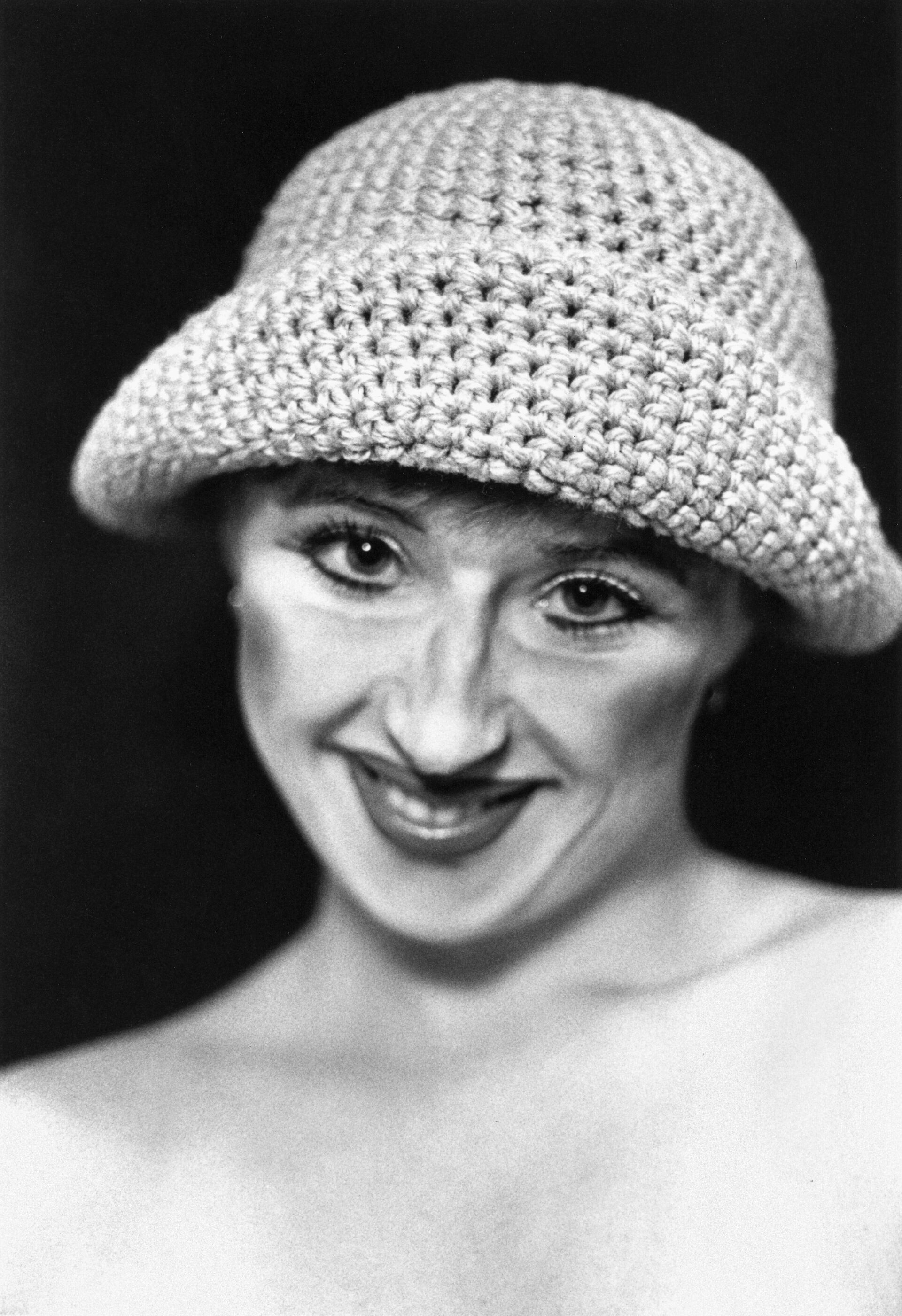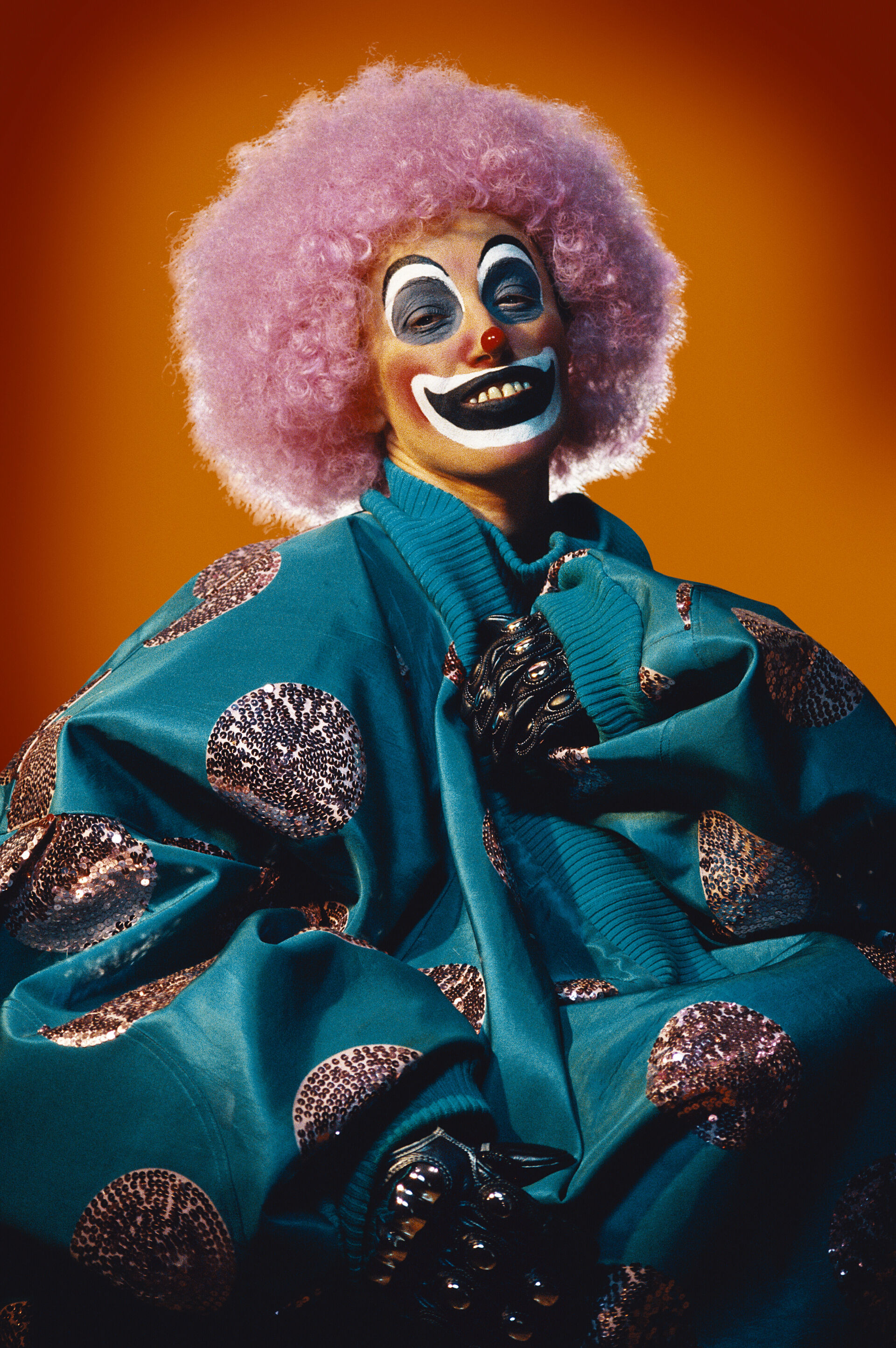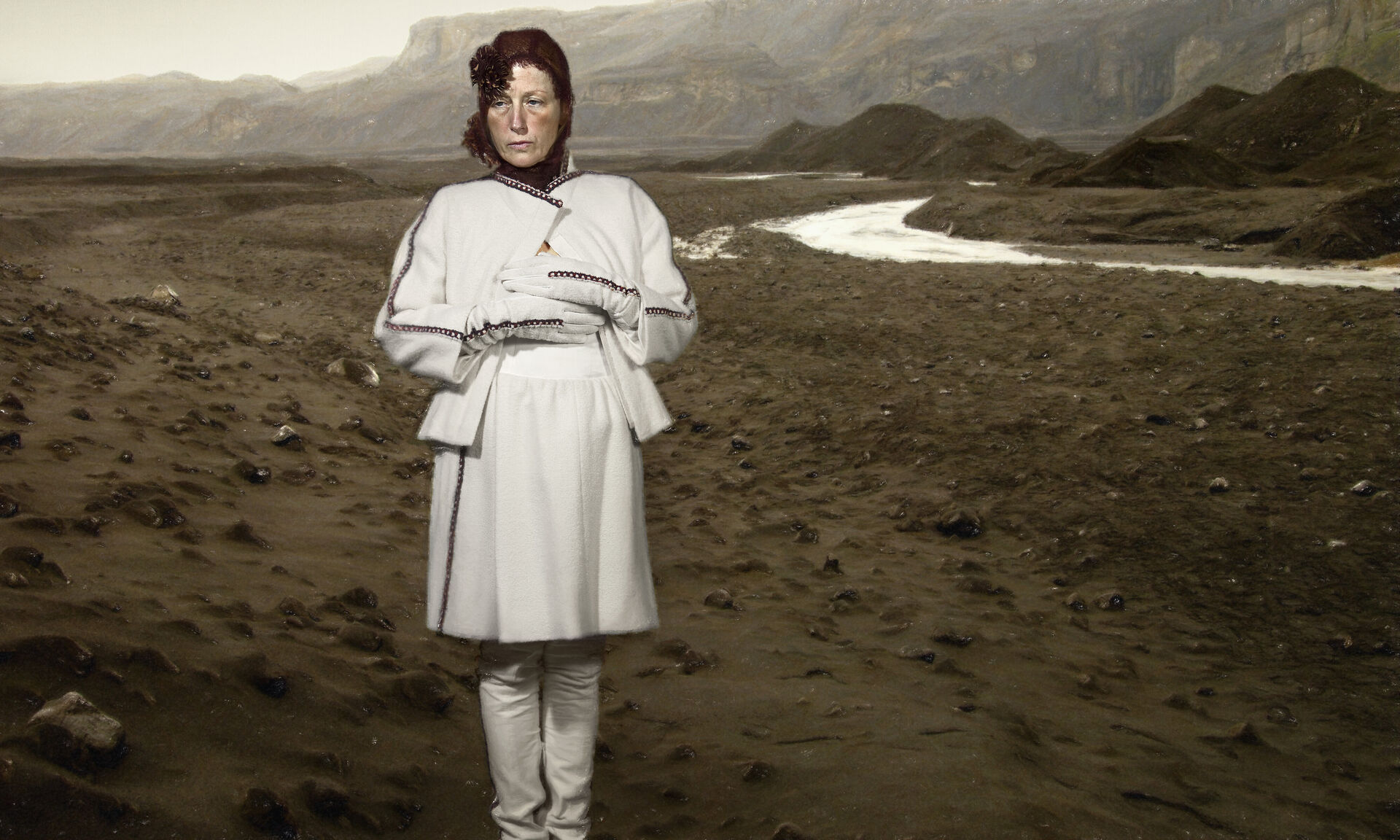Often, I find myself feeling betrayed by the fickleness of fashion. What is detested today was celebrated just a few weeks ago, and it may well be scorned again in a matter of months. The capricious nature of fashion makes it an unpredictable and whimsical force that encompasses more than just clothing; it’s a way of being. Traversing psychological realms, it performs a constant influx of beauty trends serving the ordinary purpose of inventing insecurities for the sake of capitalism, as it doesn’t involve an innate reflection of evolving tastes or preferences but rather a deliberate strategy employed by industries to create feelings of insecurity.
What would then be the solution to these invented insecurities? Well, the answer is simple: in consumption societies, spending
money is always the answer! A crucial aspect of this framework is the idea that the next emerging ideal remains just out of reach. Not completely, but just. This cultivates an enduring hope that one will finally be just good enough. It’s possible that I might be just
good enough.
This interplay of false hope ensnares many, leading them to toil on the precipice of obsession fuelled by the incessant habit of comparing oneself to others. This makes evident how beauty standards are meticulously designed to never be bridged. In this context, phantasmagoria, the illusion of reality that tricks the senses through technical manipulation, is key to constructing a visual image for such concepts. Photographer Cindy Sherman, renowned for her photographic portrayals of various personas, like fashion employs cultural references to convey a message, but with a different objective. Instead of celebrating capitalism and societal expectations, Sherman critiques them. In Sherman’s use of phantasmagoria, I found another antidote to the invented insecurities imposed by mass media. I’ll show how she positions her work at the intersection of the actual body and the desired image – how she plays with fashion's whimsical nature in such a way that fashion might feel betrayed by Sherman in turn.

Untitled (A) 1975 Gelatin silver print
© Cindy Sherman Courtesy the artist and Hauser & Wirth
Earlier works of Sherman are characterised by what gender theorist Jack Halberstam describes as the traditional script: a commonly recognized rhythm of life called ‘the normal’. It’s not called the normal because these traditional roles, social structures, and behaviours are indeed the most prevalent in daily life, no. It’s because they’re the ones most reflected in popular and mass culture. Sherman’s use of the traditional script aids spectators in recognising the characters she portrays. Take, for instance, the Untitled Film Stills series (1977–1980), in which she crafted images reminiscent of scenes from 1950s and 1960s Hollywood films. In this series, Sherman presents herself as the housewife, the femme fatale, and the working girl. The ease with which we understand these images, and to that extent these roles, reflects the prevalence of gender stereotypes and traditional gender norms. Stereotypes reveal how sexism influences and encourages women to conform to certain prescribed behaviours rather than allowing them the autonomy to express their true desires and personalities. By embodying these stereotypical roles herself, Sherman highlights the ways in which women are often pigeonholed into specific categories and expected to conform to certain ideals of femininity. At the same time, it’s crucial to acknowledge that Sherman, being a white cis woman, can only approach these stereotypes from her own perspective, and that the series consequently lacks valuable viewpoints from trans people and people of colour.
Sherman’s work emerged in the 1970s, amidst the visual culture explosion of magazines, films, and advertising. From the start of her career, she had expressed a desire to create something with a mass-produced look, deliberately avoiding association with complex art theory. Her aim was to produce easily understandable images. This clever use of aspirational appearance aligns with social theorist Theodor Adorno’s concept of the covering up of the ‘real’ situation through phantasmagoria.Melanie Swalwell, ‘Aesthetics and Hyper/aesthetics: Rethinking the Senses in Contemporary Media Contexts’, PhD thesis, 2002, p. 17. Adorno believed the media’s visual communication techniques were developed to induce subjection and to control the masses.Swalwell, p. 86 However, Sherman employs this technique not to manipulate but to prompt critical reflection from her audience.
Fashion, on the other hand, uses phantasmagoria in the way described by Adorno.It possesses a unique imaginative capacity to transcend the reality of the mundane by constructing dreamscapes that depict alternative life scenarios revolving around beauty, youth, and happiness. In these scenarios, spectators are invited to mentally insert themselves, and the phantasmagorical expressions, propelled by technology, offer boundless possibilities to achieve this. Within this fantastical message, the narrative is stable, whereas the garments vary each time. Subsequently, fashion is not conveyed through clothing but rather through the image itself. Capitalism utilises garments as mere tools to propagate an idealised self-image. This strategy aids in convincing people that purchasing the product is a step towards the presented phantasmagorical.
Fashion advertisements aim to spark desire and simultaneously often induce spectators to repent by triggering a complex of emotions: feelings of inadequacy and alienation and a perceived lack of competence. This underscores mass media’s influence in reshaping subjectivity towards others and oneself – a dangerous side effect Adorno warned of – using mass culture as a tool for the manipulation of behaviour and beliefs.
Nowadays, we consume content on an unprecedented scale, and I cannot deny its personal impact on me. Throughout my teenage years, I acquired the habit of viewing my body not as a whole but as individual parts, meticulously examining each one with specific goals in mind and monitoring its progress toward them. Unfortunately, this process of conditioning my body to conform to these checklists continues today, executed pragmatically and almost mechanically. I catch myself occasionally perceiving my body as an object, or a modular system designed for correction, adjustment, enlargement, or minimisation of separate parts – all having to conform to various parameters and measurements. Compassion is absent, imperfections are not easily overlooked, and strict standards are rigorously imposed and enforced. However, these examinations seem trivial, as happiness and true fulfilment supposedly lie in eventually meeting these standards, just as fashion has always promised me. But will fashion betray me again?
At this juncture, the conversation delves into a realm where beauty standards manifest as a form of self-alienation. The act of enlarging, minimising, and concealing certain body parts has not only become commonplace but also widely accepted as the norm. Sherman’s work from the late 2000s exemplifies this trend, her characters appearing more grotesque and outlandish than they did in her earlier work. The makeup, wigs, costumes, and prosthetics intentionally lack realism; their artificiality hits harder than any realism ever could.
For these series, Sherman once again taps into popular culture for inspiration, but this time she shifts the emphasis towards collective beliefs about aging and the class dynamics associated with it. For Untitled #466, she depicts herself in a long, elegant green gown, with her hair neatly pinned back and her face adorned with heavy makeup, embodying a woman who emanates a sense of sophistication but also seemingly struggles with herself, desperately aiming to perceive her youth in subdued ways. Eva Respini, curator at MoMA, notes of this work that it “is very timely and very much speaks to our current condition. It also reflects our current culture of sort of YouTube fame, celebrity makeovers, the Real Housewives TV franchise. All those things that are part of our cultural language today.The Museum of Modern Art. “How To See Cindy Sherman - With Eva Respini”, January 19, 2016. https://www.youtube.com/watch?....
Trends in celebrity plastic surgery permeate unavoidably into the public, influencing people’s actions and the ever-shifting Overton window. Fashion imagery is recognized as a potent tool in this distortion of judgement. When encountering an image once or twice, many can suppress their self-critical voices. However, repeated exposure to similar features can make people start to believe that they’re different and should take action to alter themselves to fit the ‘dominant’ picture. This phenomenon highlights a lack of meaningful and critical engagement with the real world and illustrates Adorno’s concept of passive acceptance of the status quo. It also leads people to spend significant amounts of money to permanently change themselves, demolishing unique features to better align with the prevailing idea of beauty and losing touch with reality.
At this point of my introspection, I’ve come to realize how strongly my thoughts are manipulated by mass culture, just as Adorno articulated in his critical theory. I painfully but fully grasp the essence of his well-known statement: ‘The triumph of advertising in the culture industry is that consumers feel compelled to buy and use its products even though they see through them.’ As frustrating as it is to acknowledge, I’ve fallen victim to manufactured images and cultural products prevalent in fashion advertisements. Is it not within my power to resist buying into these beauty standards?
Sherman, on the other hand, found her methodology for doing so decades ago and has recently introduced social media to her arsenal of tools. In 2017, she made her profile public and has been sharing a lot of her work through this online platform. Here, she has found a space to further experiment with altering the body through filters and other means of digital manipulation. Rather than using AI to conform to conventional ideals of attractiveness, Sherman employs it to explore the intricate relationship between the artificial and the human. In one of her recent self-portraits, ‘Untitled #648’, she utilises a digital collaging technique that blends black and white with colour photographs to reconstruct her facial features in slightly unconventional positions, creating a visually unsettling effect that induces a sense of unease. Together, the disproportionately enlarged lips and unnaturally taut skin bear a striking resemblance to what is often stigmatised in popular culture as a botched result, the unfortunate consequences of plastic surgery gone awry.
These provocative and discomforting works are akin to that of multimedia artist Orlan’s controversial work The Reincarnation of Saint Orlan (1990–1995), in which she underwent a series of plastic surgery procedures, each inspired by iconic images of beauty and femininity from art history, religious iconography, and popular culture. Orlan’s surgeries were performed under local anaesthesia and broadcast live to audiences in galleries and museums around the world, blurring the boundaries between performance art, body modification, and medical intervention. While both Sherman and Orlan explore themes of identity and gender through their own bodies, Orlan is herself in her work, whereas Cindy never portraits herself as Cindy but always rather as one of her personas. These personas are temporal, or digitally created, unlike Orlan’s alterations to her body, which are permanent and real. Moreover, Orlan’s style is highly confrontational and performative, rooted in the world of contemporary art and often secluded from mainstream audiences. By contrast, Sherman’s style is cinematic and theatrical, situated at the intersection of fashion and performance, blurring the lines between art and advertisement. Consequently, she speaks to a broad public, enabling many to participate in debates about beauty.

Untitled #414 2003 Chromogenic color print
© Cindy Sherman Courtesy the artist and Hauser & Wirth
This blurring of fashion and art is characteristic of the late twentieth century, when fashion advertisements started to look more like works of art rather than commercials.Fashion in Disguise Cindy Sherman's (anti-)Fashion Photographs’ in Cindy Sherman – Anti-Fashion (Hannibal Books, 2024). In the essay 'Fashion in Disguise. Cindy Sherman's (anti-)Fashion Photographs' in Cindy Sherman: Anti-Fashion (Alessandra Nappo, Hanne Loreck, Katharina Massing et al., Hannibal Books, 2024) Alessandra Nappo describes how this hybridisation provided opportunities for artists like Sherman to collaborate with various fashion houses, such as Louis Vuitton, Comme des Garçons, and Marc Jacobs. Notably, Sherman was featured in Jacobs’ S/S24 campaign, captured by his regular photographer, Juergen Teller. The campaign depicts Sherman in one of her personas against the backdrop of the Marc Jacobs International office in New York City, standing somewhat stiffly while prominently showcasing a Marc Jacobs crossbody bag. In this portrayal, Sherman wears a tidy blonde wig, gloves, and strikingly high platform boots. Directly facing the camera, she seems to present herself as a woman of stature and great social standing. While this image could easily be perceived as a parody of Upper East Side shoppers, it’s quite the contrary. What makes Sherman such an intriguing artist is her great empathy. She would never mock her characters but is rather attempting to bring forth their humanity. The ongoing exploration of identity is at the core of her artistic practice, even when she’s not taking the photo.
At the same time, I find this advertisement somewhat problematic. While Sherman is known for her witty and reflective comments on society, it appears that she’s simultaneously leveraging these qualities for a capitalistic agenda. Regardless of her reputation for being critical, explorative, and artistic, I can’t help but think that Jacobs is using Sherman’s critical and cultural capital as a smokescreen, masking the true intention of the ad, which is to promote the sale of the bag. As Adorno would say, the photo covers up the ‘real’ situation through phantasmagoria.Swalwell, p. 17. On the other hand, perhaps Sherman is making yet another incisive commentary here, one that operates on a meta level, prompting contemplation about the essence of an artist’s identity. The thought compels me to reflect on myself and ponder, who am I to judge?
Sherman’s work, with its numerous references to popular and mass culture, stereotypes, and gender roles, is immediately comprehensible. In mere seconds, we recognize what Sherman aims to display, yet she never fully reaches complete representation of the characters she presents – not because she’s incapable, but because she wants her work to exist on the border of reality and imagination. In both her body of work and her body as a work, Sherman embodies a practice that protests dominant societal expectations related to gender roles and beauty. The body is not a fleeting fashion trend; it’s a celebration of identity, and it should actively protest distorted beauty standards rooted in patriarchal and heteronormative frameworks.
I’d like to end with a quote from an interview with the Wolf Foundation, in which Sherman states, ‘ I have used pretty much myself in almost all of my work, although I am in disguise so that you hopefully would not even recognize me.’The Wolf Foundation. “Cindy Sherman, Wolf Prize Laureate in Art 2020”, 14 April 2022. https://www.youtube.com/watch?....This statement leaves me with a somewhat bittersweet aftertaste. What does Sherman mean by this? Does she not want to be seen for who she really is, without the makeup, fake noses, wigs, and personas? Is Sherman – the human, not the photographer – hesitant to fully confront her true self, stripped of disguises and roles? I would feel nothing but sympathy if she were. Being a woman has always been fraught with challenges, akin to navigating a minefield with few safe paths. Perhaps, in the end, what we seek is not for Sherman to reveal herself as she truly is. Maybe we prefer her to remain fictitious. Let her keep her whimsical essence, akin to that of fashion. Perhaps this is how Sherman continues to elude fashion’s manipulative grip. Out of the many roles she embodies, the one in which she deceives fashion is my absolute favourite.
Editor's note. This essay is published in the context of the Cindy Sherman exhibition at FOMU, the first major solo of the American artist in Belgium, running from 28 September 2024 till 2 February 2025. Spanning five decades of work divided over multiple floors, the exhibition exists of two parts, Cindy Sherman – Early Works 1975-1980 and Cindy Sherman – Anti-Fashion. The latter dives deeper into Sherman’s fascination for fashion and the nexus between her independent work and commissions in the fashion industry. More info here.

